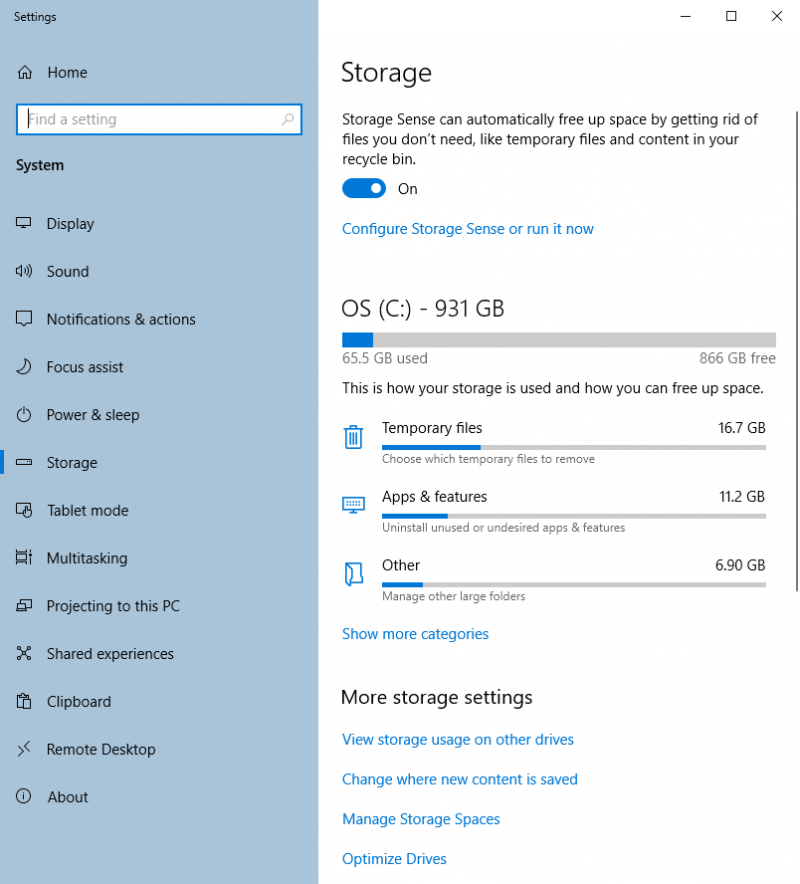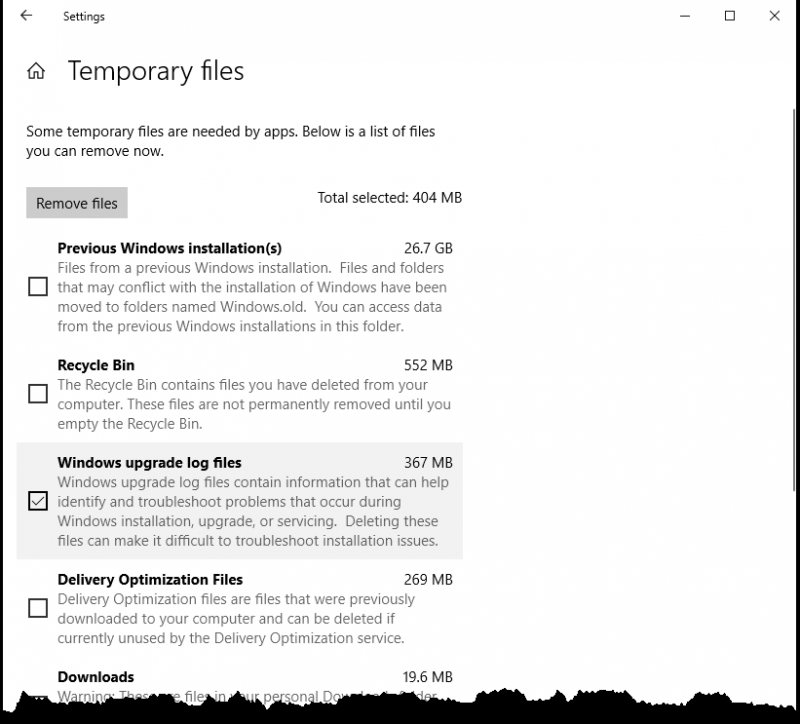Taking Control of Your Storage Space
When it comes to storage space on our computers it is important to keep on top of how much space you have available. With the release of Windows 10 Version 1903, Windows now reserves 7GB of your hard drive space, meaning that keeping up on your available storage space is even more important. In the past this has been tricky, as there has not been a simple way of doing this built into the Windows operating system. Previously Windows provided Storage Sense, a great way to start tracking your storage space. With Version 1903, Windows updated the Storage Settings to allow you more options that help in managing your files and in freeing up space.
To access the storage settings on your computer (running Version 1903 or higher) follow these steps:
- Press the Windows Key and type (without quotes) "Storage Settings," and press Enter. This opens the Storage tab of the Settings window. (See Figure 1.)

Figure 1. The updated Storage tab of the Settings windowl.
- Under your drive name, you will see the total amount of space available and how much space is in use. By default, Windows will show three categories of how your storage space is being used. Clicking on the Show More Categories link expands the categories list to show all the storage area breakdowns.
- Click on one of the categories listed, and Windows will change the Storage Tab to show a detailed list of how the category you selected breaks down. (See Figure 2.)

Figure 2. The Temporary Files section of the Storage tab of the Settings window.
- Click on an item you wish to remove from the detailed view list. As you click on an item you will see a cumulative total at the top of the list show how much space will be freed up by removing the files you have selected.
- Once you have selected all the items you want removed from that category you can click on Remove Files button. Windows will then remove those files, either by purging them or moving them to the recycle bin depending on the file type. If you back out of the section without clicking on the button, nothing will be removed.
By keeping on top of the files on your system, you will have the space you need for important files you want to keep.
 This tip (13635) applies to Windows 10.
This tip (13635) applies to Windows 10.
Author Bio
Eric Wyatt
Eric Wyatt is a swell guy (or so his friends tell him). He is a formally trained designer and branding expert, bringing a wide range of skills to his Tips.Net articles. Learn more about Eric...
Setting Data Usage Limits
Windows 10 allows you to set Data Usage limits for your computer. This is helpful when your computer has a metered ...
Discover More
More Clocks to Track Time
As you work you may need to keep track of the time in various locations or time zones. Add additional clocks to the clock ...
Discover More
Using Edge Chromium to Screen Capture a Web Page
Have you ever needed to take a screen capture of a web page? Edge Chromium allows for easy screen capture.
Discover More
Starting Windows 10 in Safe Mode
Hopefully you'll never find yourself in a situation where you need to restart your computer in Safe Mode. If you do, ...
Discover More
Understanding Processes in the Task Manager
Your computer is typically running scores of processes behind the scenes of the relatively few windows you may have open. ...
Discover More
Allowing Remote Desktop
Remote Desktop allows you to access other systems and operate them from your own system. If you want to use this ...
Discover More


![]() This tip (13635) applies to Windows 10.
This tip (13635) applies to Windows 10.
Comments